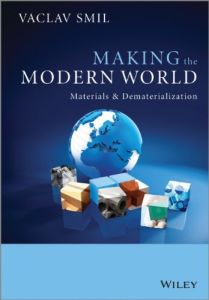Join getAbstract to access the summary!

Join getAbstract to access the summary!
Vaclav Smil
Making the Modern World
Materials and Dematerialization
Wiley, 2013
What's inside?
How has the use of materials shaped and marked each age of progress?
Recommendation
Throughout this challenging read, scientist and policy analyst Vaclav Smil examines how the world uses materials. He wrestles with dense concepts using a specialized vocabulary and some jargon. Persevere anyway. This is an important, fascinating academic study. Smil’s approach is historical and multidisciplinary: He compares how algae, birds and beavers use materials to how humans use them, and traces human development from the first stone tools through the Bowflex machine. Smil’s treatise should be required reading for anyone thinking about contemporary economics and humanity’s future. getAbstract recommends his rigorous study to investors, ecologists, futurists, historians, and students of history and business.
Summary
About the Author
Scientist and policy analyst Vaclav Smil is distinguished professor emeritus at the University of Manitoba. He wrote Made in the USA, Should We Eat Meat? and many other books and articles.






















Comment on this summary